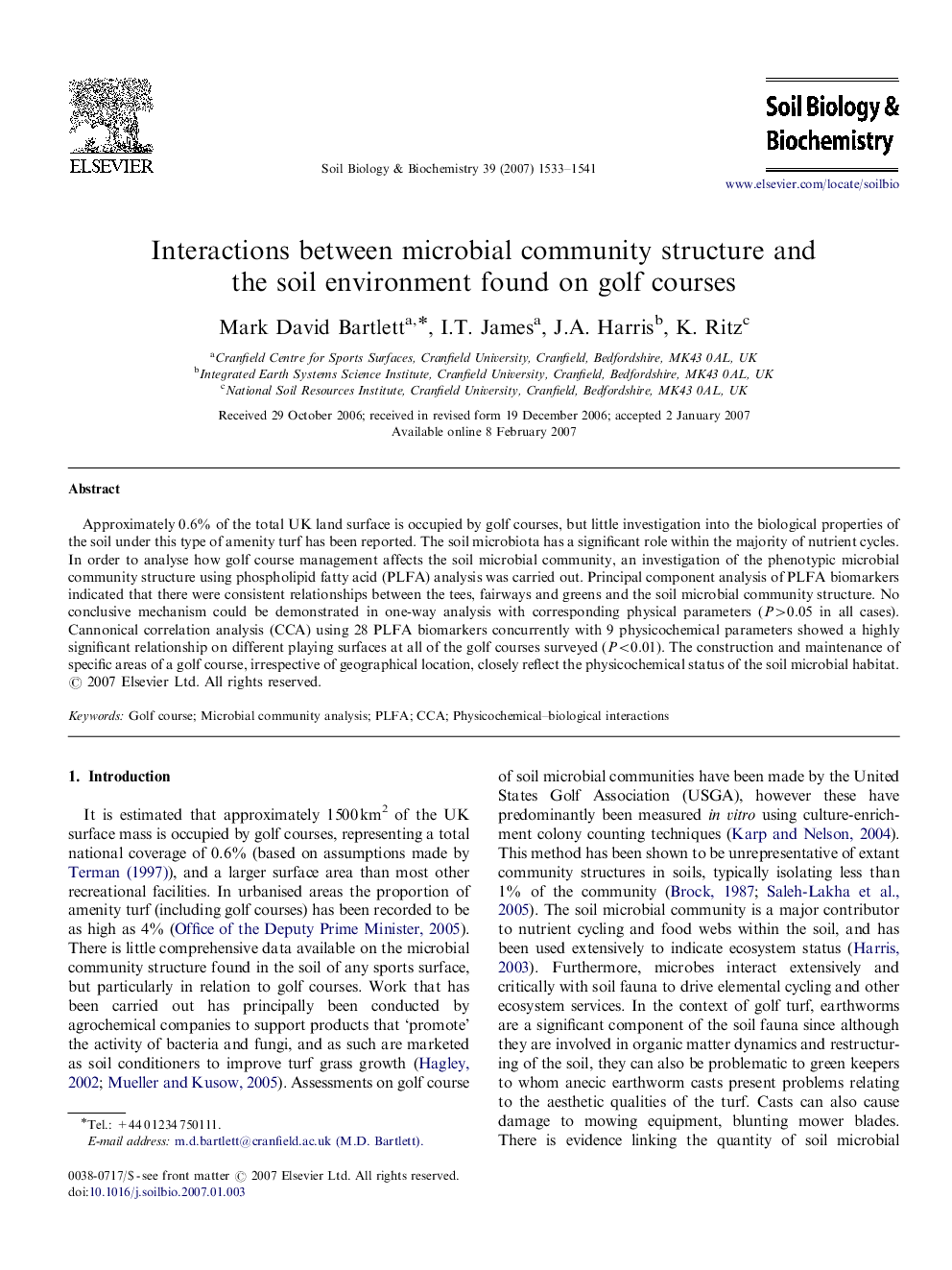| Article ID | Journal | Published Year | Pages | File Type |
|---|---|---|---|---|
| 2026218 | Soil Biology and Biochemistry | 2007 | 9 Pages |
Approximately 0.6% of the total UK land surface is occupied by golf courses, but little investigation into the biological properties of the soil under this type of amenity turf has been reported. The soil microbiota has a significant role within the majority of nutrient cycles. In order to analyse how golf course management affects the soil microbial community, an investigation of the phenotypic microbial community structure using phospholipid fatty acid (PLFA) analysis was carried out. Principal component analysis of PLFA biomarkers indicated that there were consistent relationships between the tees, fairways and greens and the soil microbial community structure. No conclusive mechanism could be demonstrated in one-way analysis with corresponding physical parameters (P>0.05 in all cases). Cannonical correlation analysis (CCA) using 28 PLFA biomarkers concurrently with 9 physicochemical parameters showed a highly significant relationship on different playing surfaces at all of the golf courses surveyed (P<0.01). The construction and maintenance of specific areas of a golf course, irrespective of geographical location, closely reflect the physicochemical status of the soil microbial habitat.
